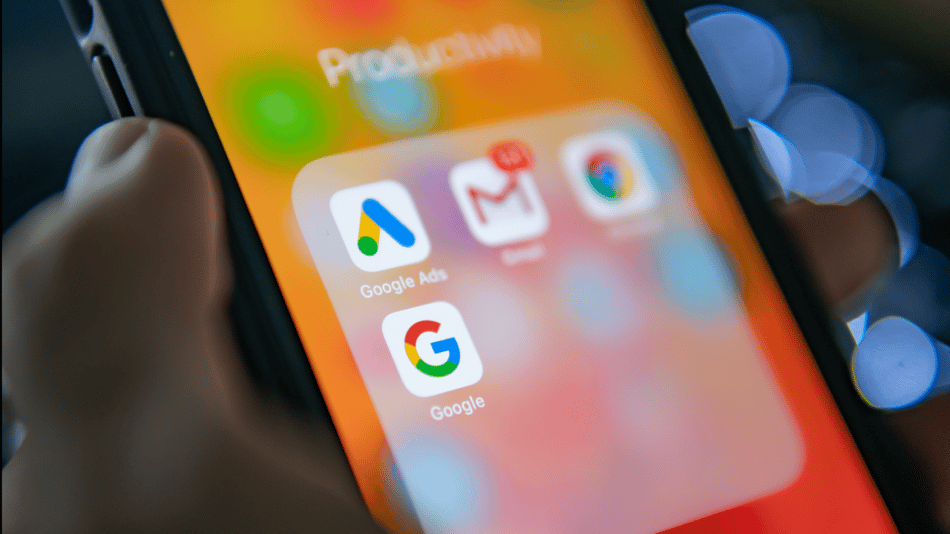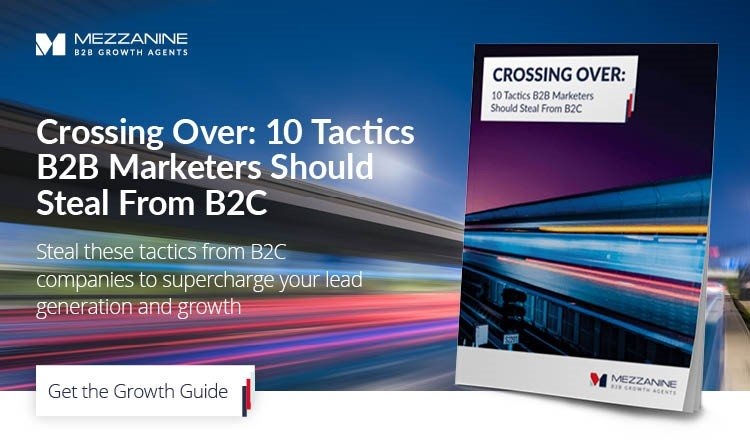Are Google Ads Worth The Money For B2B Lead Generation?

The answer is yes...and here's why.
There's a perception in the business-to-business (B2B) world that digital advertising is a waste of money. A lot of companies assume that paying for clicks is the rightful realm of business-to-consumer (B2C) marketers. When it comes to landing businesses, it simply doesn't drive the kind of lead generation and conversions B2B companies want to see with their spend.
That’s kind of a shortsighted view. In fact, Google Ads can have some pretty significant benefits for B2B marketers – you just have to know how to maximize them to reach your particular audience.

For starters, Google essentially owns search – and search engine advertising. A lot of the things business decision makers search for are very niche, so it’s easier to get great results on very specific, long-tail keywords that cost less because there isn’t as much competition for them. For example, most people aren’t going to search for “contract electronic manufacturers in Ontario” unless they have a need for that specific thing, right? It may take a bit of trial-and-error and some patience, but with the right keywords, it’s possible to hyper-target specialty segments.
So yes, there are plenty of stories out there about wasted money and well-meaning campaigns that landed flat. But that doesn't mean Google Ads is a waste of money for your company. In fact, it could be a better results driver than any of your other marketing initiatives – you just have to do it right. If you remember that B2B and B2C customers make their buying decisions very differently, and you adapt your campaign to your specific audience, Google Ads can be a surprisingly effective marketing and lead generation tool.
Here's a quick overview of the what, why and how of Google Ads for B2B:
First off, what are Google Ads, exactly?
Google Ads, also referred to as paid ads or pay-per-click (PPC) advertising, is a paid online advertising platform that lets you reach relevant consumers online. Best known for paid search advertising – those first three listings that appear at the top of any Google search - Google Ads now also offers display advertising, which many of us may think of as “banner ads.” This combination of advertising options means that Google offers advertising at every stage of the B2B buyer’s journey.
Display ads can be targeted contextually – that is, the ads will be triggered by relevant keywords in the text adjacent to where they appear. (Example: If you’re reading an article about computers, you’ll see ads for printers.) They can also be targeted to a particular audience, which means that people who have the attributes of your target audience will see your ad. Since Google hosts the world’s largest marketing database, those audiences can be very niche – office managers at law firms, procurement professionals at OEMS, and so on. In these scenarios, the ads are working the top of the funnel, driving awareness and interest. (Or discovery, depending on which version of the journey you subscribe to!)
Google’s search ads capture shoppers later in their journey. These ads are intent-based, since the buyer already has an idea of what they’re looking for and is actively searching for it – “it” being your company’s product or service. Your company bids on keywords relevant to your business, and when a potential customer searches using those keywords – again, something like “contract electronics manufacturer in Ontario” - a text ad will surface at the top of the search engine results page. Every time a user clicks on your ad, you pay Google a specified amount, based on how much you bid. The user is then sent to your website to gather information and hopefully take some action.
Here's a helpful infographic on how Google Search Ads work.
The great thing about search engine marketing with Google is that you’re preaching to the choir: you’re targeting people who already want to talk to you and are looking for what you have to sell. But figuring out the “how” of targeting those people can be a challenge. Determining the keywords that will maximize clickthroughs from potential leads and minimize the wrong people clicking on your ad is a science that requires really knowing your customer, and being willing to do some testing.
Even further down the path to purchase, Google also offers retargeting. This is another display advertising opportunity, and a very effective one. Once a user clicks through an ad and onto your site, they’re targeted again with your display campaigns. This means that, for about 30 days after they’ve clicked away from your website, any site the user visits within Google’s massive advertising network (which includes nearly every major publisher and website on the planet) will show that buyer your ads.
It’s important to remember that you pay for every click, whether it ends up turning into a qualified lead or not. Consequently, if you have poorly targeted keywords or terms that are too general, that can add up fast without much to show for it in the end.
Why Google Ads?
Google Ads isn’t the only game in town, but there are lots of reasons (we’ve narrowed the list down to 10) to use them over any of the other options out there:
1. Google has the largest digital advertising network in the world – and it is the search engine most people use.
Want to connect with your customers where they spend their time? That’s Google. Honestly, when was the last time you used another search engine? Or a video platform other than YouTube for free content? Unless you’re on an iPhone, who essentially owns your mobile phone’s operating system? Google is the number one most visited multiple-platform web property in the world, with 259 million unique visitors and 4.8 billion transactions a day, and a whopping 62.5% market share. And this will probably come as no surprise: google.com is the most popular site in the world.
2. Your competitors are already there.
If you’re not using Google Ads, you’re falling behind. The companies who are using it are being found by the very customers who might have brought their business to you...if you'd come up in their search as a Google Ad.
3. Google Ads have unmatched reach.
As mentioned, Google’s ads hit customers at every stage of the buying cycle, from the top of the funnel via awareness-building display and banner ads and pre-roll ads on YouTube, all the way to the bottom of the funnel, with long-tail (niche) keyword searches like “buy construction layout software” or “catering service near me.”
4. ROI is easy to measure.
Digital advertising is completely ROI-driven: every click is tracked and tied to conversion. You can tie dollar value to every new lead you get, and when Google sees those numbers, the algorithm optimizes and improves them.
5. It's easy to hyper-target.
Google Ads has incredible targeting options for its display ads. We mentioned earlier that display ads can be either contextually targeted or targeted to a particular audience. In practice, that means you can show ads to people who have used specific keywords, who clicked on other ads, looked at a competitor’s ad, or who match a certain behavioural profile. You can limit ads to specific geographies. The options are endless. Plus, if you give Google a list, they can even target ads to people who are already in your CRM to keep you top of mind and relevant with your current customers and hottest leads.
6. Testing keywords is easy, too.
Google’s robust analytics give you the numbers you need quickly, and let you know exactly how many people have clicked based on each keyword and the quality of each clickthrough, so you can test multiple keywords and quickly narrow down the most fruitful ones that are netting you the best leads. The same goes for your audience targeting – Google’s algorithms can very quickly give you the data you need to optimize your campaigns, pull certain ads, or pause particular audiences or web properties.
7. Google offers high-value support.
If you commit to a minimum spend with Google Ads, you may be offered account management services for three months. Agencies usually charge 15% to 20% over the media costs of these services but with Google, they come free for a full quarter. The Google Ads team does the keyword research for you, creates the ads, recommends ad copy and creates display ads. They’ll even help you connect your Google Ads account to Google Analytics for more efficient and robust campaign tracking. The value is significant.
8. They ensure your account performs at its best.
If you take advantage of Google’s account management offer, they’ll manage the optimization of your account to ensure it's achieving the highest possible ROI. Beyond the human support and recommendations, Google also offers AI-driven recommendations. Powered by sophisticated Machine Learning, Google’s recommendations help you make smarter keyword choices and even help you create more effective ads.
9. It costs less than a trade show, with (potentially) better results.
Why stand around at a tradeshow booth all day catering to swag-seekers when you can easily get direct access to customers who are looking for you? Google Ads create awareness among decision makers in the industries you serve and give you exposure to thousands of hand-raisers, with a trained, focused team working to drive them to your website or campaign landing page.
10. Google Ads make it easier to stay relevant to your current audience.
By connecting with the audience you've already captured, you’re highlighting your value and expertise to build loyalty, trust and share of mind. There’s also a vanity factor: Google’s targeted display advertising makes your company look big and important. When your customers and prospects see your ad on the homepage of the Toronto Star (within Google’s network!) they are sure to be impressed.
Looking for some guidance on maximizing your B2B pay-per-click spend? Contact us anytime for marketing insights focused on the unique needs of B2B marketers.
.png?width=2361&height=488&name=Mezzanine%20Logo_Horiz_RGB_on%20blue%20(1).png)

